November 6-10, 2019
I visited two really good museums while I was in New Orleans: The National World War II Museum and the New Orleans Museum of Art.
1. The National World War II Museum
At the end of a long day of conferencing, I grabbed a taxi (Uber was SUPER slow in New Orleans, but a cab was always waiting at the hotel) and headed to what Congress designated in 2003 as America's official National World War II Museum. The museum's website states, "The National WWII Museum tells the story of the American experience in the war that changed the world--why it was fought, how it was won, and what it means today--so that all generations will understand the price of freedom and be inspired by what they learn."
We all know that it was much different during World War II.
The Big Five, with FDR placed humbly in the center.
There are several exhibits that take visitors into the heart of the battle--its sights and sounds and details.
I was moved by the words of the famous war correspondent Ernie Pyle.
Other writers were also spotlighted, including Bill Mauldin and Kurt Vonnegut.
And speaking of powerful images and words, this photo of Dwight D. Eisenhower was taken on June 6, 1944. Below it is a quote: "People of Western Europe, I have this message for all of you. Although the initial assault may not have been made in your own country, the hour of your liberation is approaching."
The museum path led right into the Third Reich.
Many people know that Berlin, the capital of Germany, was almost completely destroyed during the war. The largest American raid on the city was on February 3, 1945, and included 1,600 US aircraft.
I was glad to see an exhibit describing the destruction of Dresden. My German immigrant mother used to weep every time she talked about this bombing, which occurred on February 13-15, 1945, less than two weeks before her own hometown was destroyed. Whether or not the destruction of this city, considered by many to be the most beautiful in Germany at the time, was warranted has been the subject of much debate.
In spite of the devastation, just weeks later, this was Hitler's reaction.
But on May 7, 1945, there was this.
It was interesting to see some of the Japanese propaganda . . . .
In the courtyard are pieces of the Atlantic Wall, a precursor of sorts to the Berlin Wall or to the US/Mexico border wall. Between 1942 and 1944, Hitler had an extensive defensive wall built--mostly by French workers--along the coast of continental Europe and Scandinavia. Thousands of pieces of artillery and thousands of German troops were placed near the wall to help guard the continent. Hitler's great wall, however, was stormed by the Allied invasion at Normandy within a few hours.
Anne Frank stands in front of the wall remnants and next to her own words: "Sometime this terrible war will be over. Surely the time will come when we are people again, and not just Jews." (Written in her journal on 11 April, 1944). Less than four months later, she and her family were discovered by the Nazis and sent to Auschwitz first and then to Bergen-Belsen concentration camp, where she eventually died.
This bronze sculpture entitled Lest We Forget: The Mission depicts a squadron leader briefing his young fighter pilots before a mission. They are the seated figures. The four lighter-colored men in full gear behind them are the spirits of other pilots killed on previous missions. The sculptor, Fredric Arnold, was himself a combat pilot and one of only a few from his aviation cadet class who survived the war. This scene is his tribute to more than 88,000 US airmen killed during World War II. He completed it just two years before his death in 2018.
A view from the back shows the "spirit" aviators.
I will finish off with President Franklin D. Roosevelt and his words spoken on February 12, 1943.
Well. That museum was a very heavy experience, and I needed something a little lighter, so after another long day I took a cab to the New Orleans Museum of Art, or NOMA.
I wouldn't say that El Greco's St. Francis (c. 1570), with its skull and stigmata, is particularly cheerful.
Next comes Adoration of the Magi (c. 1370-80) by Andrea Vanni.
By the way, this artwork is housed in a beautiful building, constructed in 1911. It is considered to be in the top 25% of the nation's art museums.
I like The Lawyer's Office, painted by the Dutch artist Marinus van Reymerswaele, because of each of the incredibly expressive faces, particularly that of the eponymous lawyer, seated at left. You can tell what the artist thought of lawyers, can't you? I also love it because it was painted in 1545. It is timeless.
Unfortunately, I didn't write down who painted this "angel," or what painting it is from, but it is one of the ugliest angels/cherubs I have ever seen.
Every good museum needs a Gilbert Stuart painting of George Washington (there are more than one hundred), but this version, painted in about 1800, is one of the most reproduced of Stuart's painting and is the one found on our dollar bill.
American artist Will Ryman created America in 2013 to express his feelings about capitalism
Visitors can actually go inside golden "log cabin." Inside they will find the walls covered with arrowheads, chains, shackles, corn, cotton, coal, candy, bullets, railroad ties, cigarettes, gas caps, spark plugs, soda tabs, telephone cords, pills, keyboards, iPhones, iPads, lightbulbs, and fiberglass--all related to what the artist considers the industries and economies upon which the United States has been built.
I don't know who painted this, but it draws the viewer in like the vortex on The Twilight Zone.
Andy Warhol painted his version of a young Mick Jagger in 1975.
This collage caught my eye because it reminds me of my bulletin board in my college dorm room. It is by Robert Rauschenberg, an artist I was introduced to by my son. Melic Meeting (1979) is part of a series of large-scale works the artist created between 1975 and 1983 and which he called "Spreads" (as in "bedspreads"). This one references the southern quilting traditions he was familiar with as a child.
I love this Portrait of a Young Woman (1918) painted by the Italian artist Amedeo Modigliani. I like the surrealism of her long neck, a classic feature of his portraits.
Nor do most people need to be told that this painting, Woman in an Armchair (Jacqueline Roque Picasso) (1960) is by Pablo Picasso. Jacqueline Roque was Picasso's second wife and the subject of 400 portraits, more than any other woman he painted. They married when she was 26 and he was 72!
Would you recognize this as another Picasso? It is Still Life with Candle, painted much earlier in his career in 1937.
This is The Window of Nice (1923) by French artist Raoul Dufy. He painted this view dozens of times with different items in the foreground and from various perspectives.
How would that chair look next to this cabinet in my living room? Architettura Cabinet (1951) is a collaboration between Italian Gio Ponti, who created the structure, and Piero Fornasetti, who decorated it with wonderful trompe-l'oeil drawings.
I found this next artwork to be a little more disturbing than the other pieces I have included in this post. This is Slave Ship (1987) by American Thornton Dial. Note the American flag on the ship's bow and what looks to me like a white man raping a black woman next to it.
It's hard to see in the photo above, but these heads of the prisoners line the top deck, each one distinct from the rest.
The World War II Museum and the New Orleans Museum of Art are two world class museums, definite must-sees for museum lovers visiting New Orleans.






















































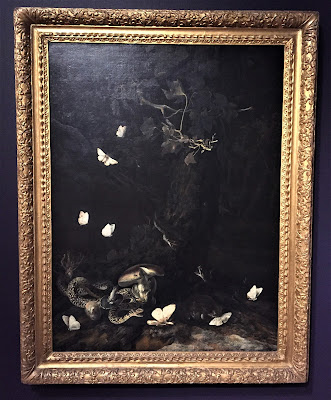
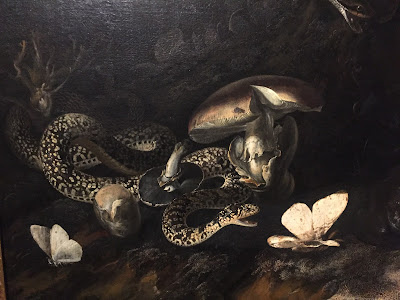





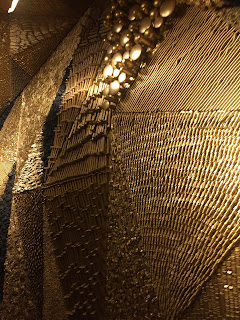


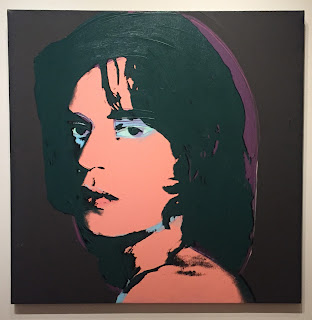









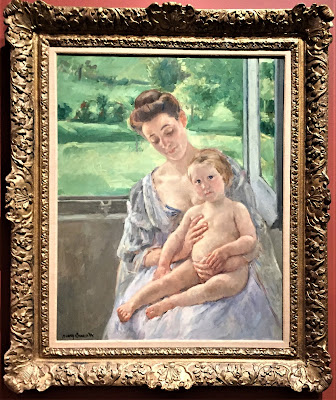





As I just told you, I would love to go back to New Orleans. I would love to spend time in the WWII Memorial. I could even spend a few minutes in the art museum, particularly if I had a bag of beignets.
ReplyDeleteI would also love to see the WWII Museum and with a bag of beignets, I would be willing to spend a whole day at the art museum.
ReplyDeleteThis was one of the things we unfortunately were not able to see on our visit to New Orleans
ReplyDelete